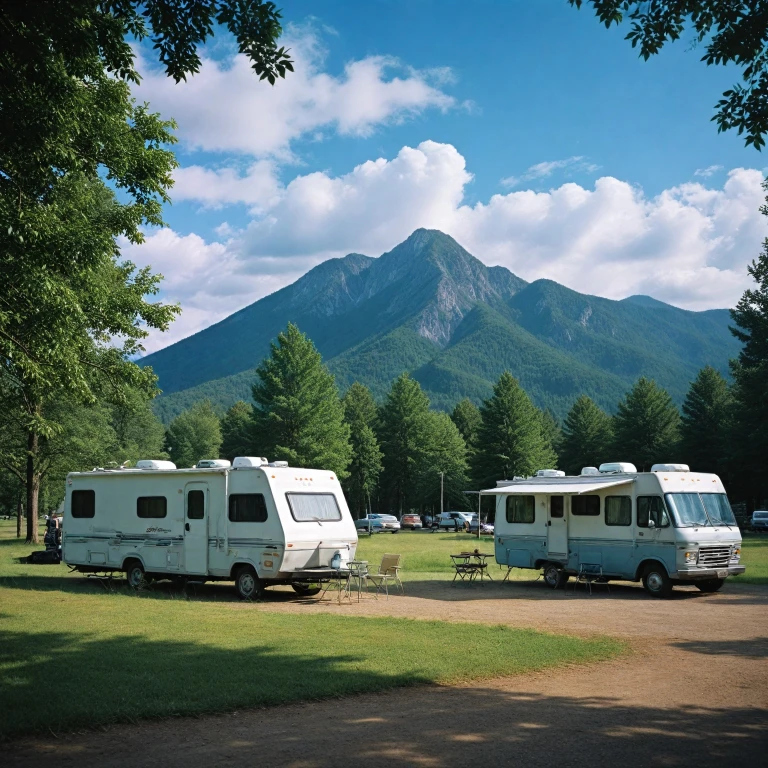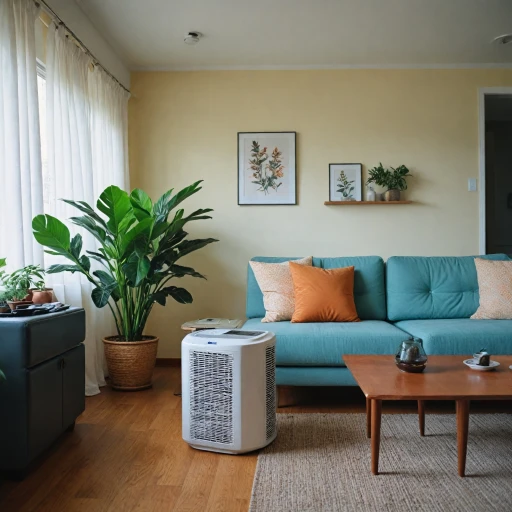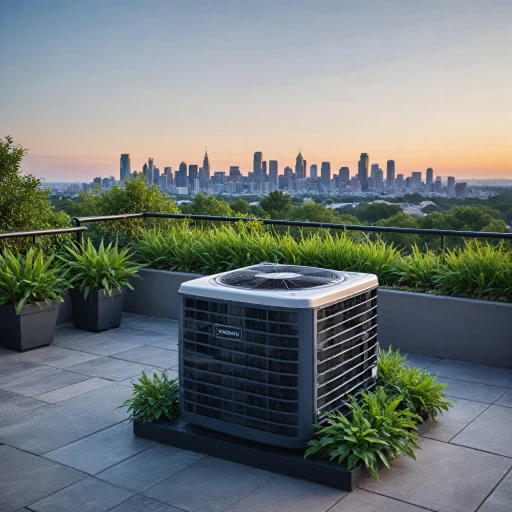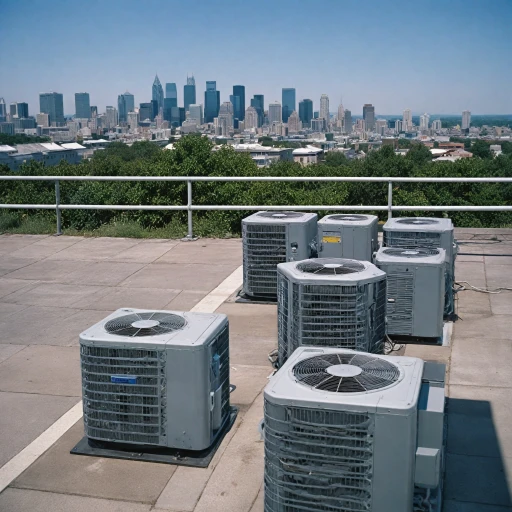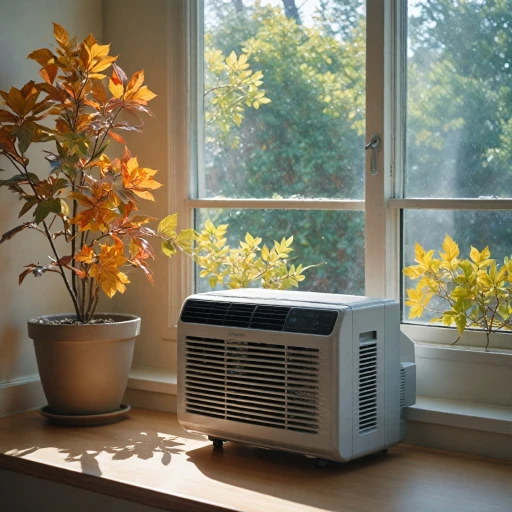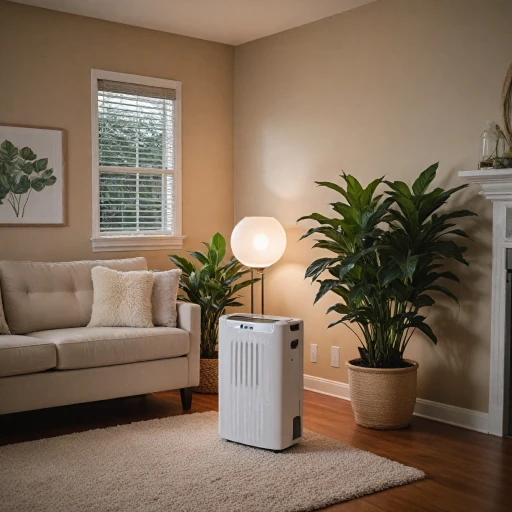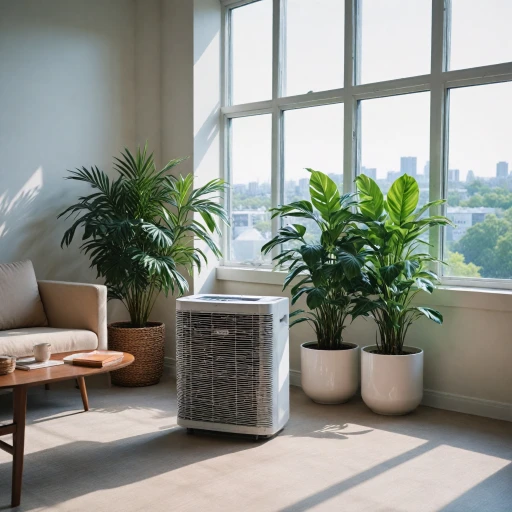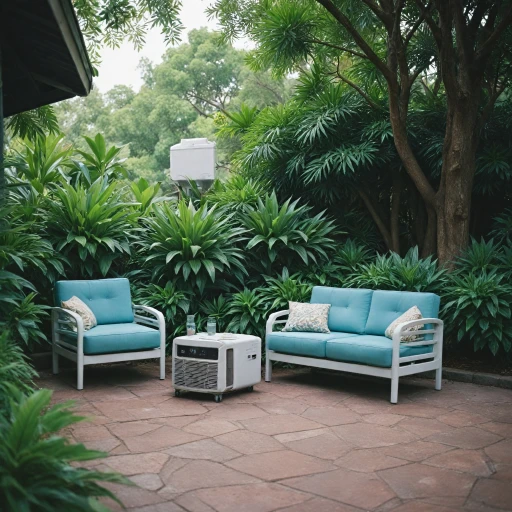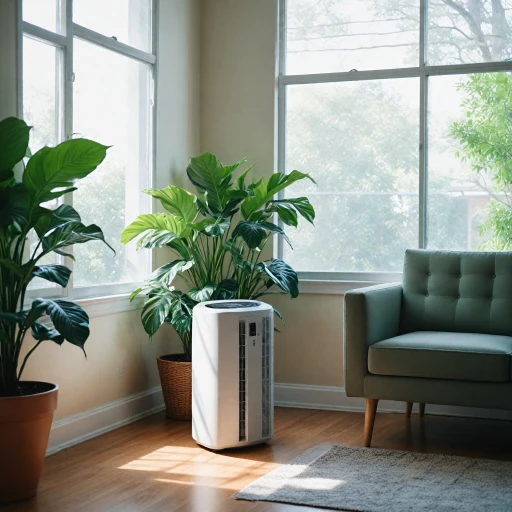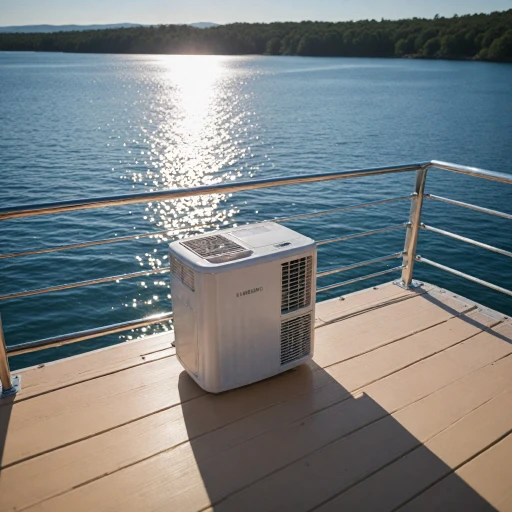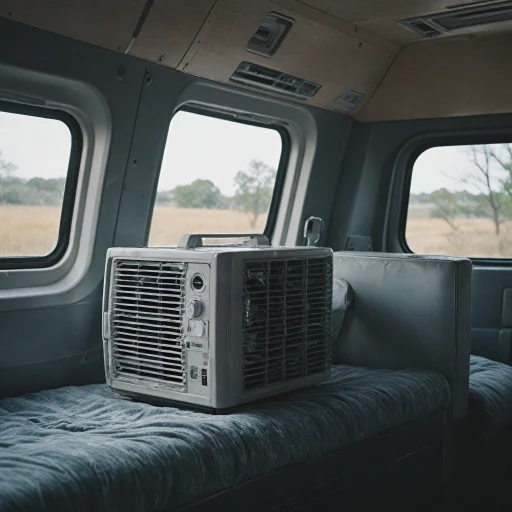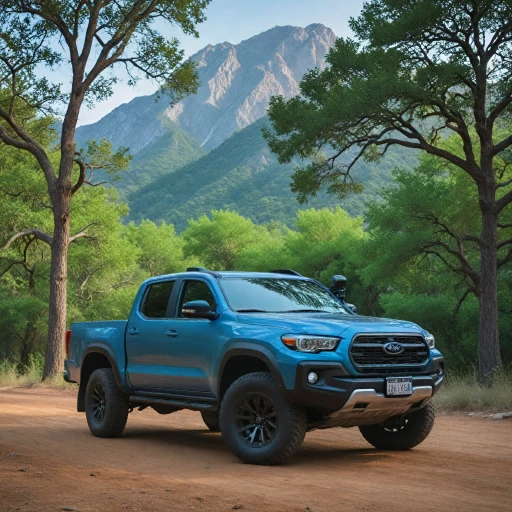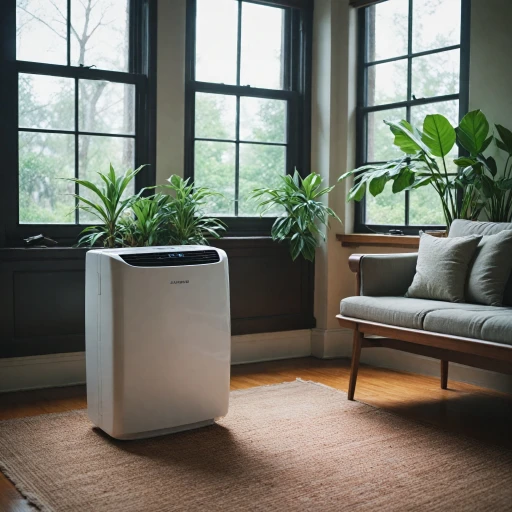
Understanding Your RV's Cooling Needs
Recognizing the Right Cooling Solution
When planning your RV adventures, ensuring a comfortable environment inside your RV is crucial, and air conditioning plays a significant role in this. Before choosing a portable air conditioner, it's essential to understand your RV's specific cooling needs. Factors such as the size of your RV, its insulation level, and the outside temperature all impact what type of cooling power you're going to need.
For starters, the cooling capacity of a portable air conditioner is measured in BTUs (British Thermal Units). The higher the BTU rating, the more cooling power the unit offers. Your RV might not require a high BTU portable unit; often, a model with a moderate BTU, like 8000 to 12000, can efficiently cool the interior. However, considering reviews and product descriptions on platforms like Amazon can offer insights from other RV owners who have faced similar conditions.
Additionally, evaluating how well the portable air conditioner maintains a cool, comfortable environment is pivotal. The room size your RV mimics will determine the suitable capacity of a unit. Ensuring you purchase a model with at least the necessary conditioner BTU can prevent constant cycling of the unit, promoting energy efficiency and prolonged system life.
Don't forget to consider the room's layout and ventilation paths, including window or ceiling vent access. A dual hose portable air conditioner may offer better efficiency by separating intake and exhaust functions, a helpful feature if you're frequently exposed to the heat pump aspect of weather exposure.
Choosing a unit with remote control can also provide convenience, letting you adjust the settings from a distance. Be sure to read customer reviews to ensure the model delivers the performance and comfort you seek for a cool, comfortable RV experience.
If you're just getting started, you may want to explore these steps, and if needed, find access to professional advice, possibly by visiting a service center in your area.
Types of Portable AC Units Suitable for RVs
Discovering a World of Options: Suitable Units for RVs
When it comes to portable air conditioners for RVs, the variety of models can be overwhelming. The selection spans across different types, each with its own features and benefits. Choosing the right portable air conditioning unit plays a critical role in ensuring a cool and comfortable experience.
There are three main types of portable AC units to consider:
- Single Hose Units: These are the most common type of portable air conditioners. They work by exhausting hot air from the room outside through a single hose. They are often more affordable but can be less efficient in larger RV spaces due to the recycling of indoor air.
- Dual Hose Units: Dual hose models use two separate hoses – one for intake and another for exhaust. This design improves the efficiency and cooling capacity, making them suitable for larger RV spaces. Although pricier than their single hose counterparts, customer reviews often highlight their power and effectiveness.
- Battery-powered Units: Perfect for off-grid adventures where power sources may be limited. These units often have a lower cooling power, but their portability and convenience make them attractive for those prioritizing mobility.
The cooling capacity of a portable AC unit, often measured in BTUs (British Thermal Units), is a key factor. A 12,000 BTU portable air conditioner might be suitable for larger rooms or RVs, while a 6,000 BTU unit may be more appropriate for smaller spaces. Remember to consider your specific needs before purchasing to ensure you select the right model to keep your space comfortable and calm.
As you evaluate different models, it's essential to check product descriptions and settings like remote control features, heating options, and unit price. Top brands often offer reviews and ratings that include a star-based system, providing valuable insights from existing users.
Energy Efficiency and Power Consumption
Balancing Energy Efficiency with Effective Cooling
An essential aspect to consider when selecting a portable air conditioner for your RV is its energy efficiency and power consumption. The balance between these factors will largely influence your experience in terms of both comfort and overall cost. Achieving a cool, comfortable interior without escalating energy bills is a common goal for RV enthusiasts.
When evaluating efficiency, look for units that offer a good Energy Efficiency Ratio (EER). This rating indicates how well your air conditioning unit uses electricity to produce cooling power. Models with high EER ratings tend to consume less power, potentially saving you money in the long run. Additionally, some portable conditioners come with Eco modes or energy-saving features, ensuring the unit runs only when needed.
Portable air conditioners suitable for RVs typically come with a range of cooling capacities, measured in BTUs (British Thermal Units). Consider the size of your RV to determine the appropriate BTU level needed for optimal cooling. For smaller spaces, a 5,000 to 8,000 BTU portable unit might suffice, while larger RVs could require models with 10,000 to 14,000 BTUs. It’s important to match the unit’s cooling capacity to the size of your room to avoid over-consuming energy.
Many of the top-rated portable units on platforms like Amazon often have customer reviews praising their efficient cool air circulation. Pay attention to user feedback on energy consumption and cooling performance. Look for products that have favorable reviews and at least a 4-star rating, indicating reliability and satisfaction from other RV users.
When considering these aspects, remember the initial unit price is an upfront investment, but energy-efficient models can benefit you in the long run. A unit with a remote control feature can further enhance convenience, allowing you to adjust settings from anywhere in your RV, keeping your space cool and comfortable.
Keeping these factors in mind not only aids in selecting the best portable air conditioner for warming summer trips but also helps you effectively manage power usage while on the go. For further insights on optimizing your AC's power consumption, explore more expert advice on choosing energy-efficient options.
Installation and Maintenance Tips
Efficient Installation and Maintenance Practices
Proper installation and maintenance are crucial for ensuring the longevity and efficiency of your portable air conditioner while you're exploring the open road in your RV. Here are some tips to help you set up and maintain your cooling unit effectively.
- Portable Setup: Begin by ensuring the unit is placed on a level surface. This not only helps in efficient operation but also prevents unnecessary vibrations. Check if your model includes a window kit, as this is essential for venting the exhaust air effectively.
- Ventilation: Ensure that the exhaust hose is connected properly to a window or vent. The length of the hose should be minimized to reduce back pressure on the portable air conditioner. A dual hose unit could offer more efficient cooling by reducing the workload.
- Regular Cleaning: Dust and debris can accumulate on the filter and evaporator coils, affecting the airflow and cooling efficiency. Regularly check and clean these components. Most reviews suggest a monthly cleaning schedule, but you can adjust it depending on usage.
- Inspect Seals: Check the seals around your portable air conditioner's exhaust and intake connections. This ensures no cool air escapes and warm air doesn’t enter the room, keeping your RV comfortable.
- Power Management: Be mindful of the BTU rating of your unit — known as conditioner BTU. Understanding the power consumption can help in selecting a model that aligns with your battery setup and available power sources, ensuring you don't overburden your RV’s electrical system.
Staying informed about user reviews can give you insights into the practical aspects of installation and maintenance. Models with a higher number of stars often have user-friendly features and product descriptions that highlight ease of setup. Portable air conditioners not only provide relief from the heat but with the right maintenance approach, they can do so effectively with minimal noise and energy consumption, ensuring a comfortable RV journey.
Noise Levels and Comfort Considerations
Evaluating the Noise Factor for a Relaxing Experience
When hitting the road in your RV, ensuring a peaceful and stress-free environment is crucial. Noise levels can greatly affect your comfort, especially when it comes to selecting a portable air conditioner. With various models available on the market, finding a quiet unit might rank high on your priority list.
Portable air conditioners vary widely in noise output, generally measured in decibels (dB). Units with lower dB ratings are quieter, making them ideal choices for an RV environment where tranquility is valued. For those sensitive to noise, opting for a unit with a noise level below 60 dB is recommended.
Additionally, some models offer a sleep mode feature, which adjusts the cooling power and decreases fan speed to ensure quieter operation during nighttime. This feature ensures a consistent flow of cool air without compromising your sleep quality.
Many manufacturers provide product descriptions that include noise level information, making it easier to compare options. Browsing customer reviews on platforms like Amazon is a helpful approach to gauge real-life experiences, as many share insights about noise levels under different conditions.
Balancing between cooling capacity and noise levels often leads to more comfortable and pleasant RV adventures. Whether you're looking at a conditioner with dual hose options, the best portable models, or units featuring a heat pump, considering noise levels is essential in achieving an optimal indoor climate while on the go.
Top Portable AC Brands and Models for RVs
Leading Brands in the Portable Air Conditioner Market for RVs
For RV enthusiasts searching for the best cooling solutions, several brands stand out for their excellence in producing portable air conditioners. These brands are recognized for their quality, reliability, and performance, making them top choices for managing the temperature in your RV.- EcoFlow Wave: Known for its innovative designs, the EcoFlow Wave offers a quiet unit with impressive cooling capacity. This btu portable air conditioner ensures your RV stays cool and comfortable, even in the hottest conditions. Its dual hose system provides efficient air conditioning, and the unit's battery power makes it a versatile choice for on-the-go cooling.
- Midea: Midea's product line includes several top-tier portable air conditioners that achieve a balance between cooling power and energy efficiency. With excellent customer reviews, Midea units often boast high star ratings on platforms like Amazon. Their remote control functionality adds an extra layer of convenience, allowing you to adjust the temperature from anywhere in your RV.
- Whynter: Offering some of the best portable air conditioning products, Whynter units are highly rated for their cooling power and modern features. These units come with heat pump capabilities, making them perfect for varied seasonal needs. Known for their durability and easy maintenance, Whynter's air conditioners are a solid investment for any RV owner.
- BLACK+DECKER: Popular for their competitive unit price and excellent cooling capabilities, BLACK+DECKER conditioners are perfect for those seeking value without compromising on performance. With straightforward product descriptions and reliable cooling power, these units are favored for their ease of use and installation.
